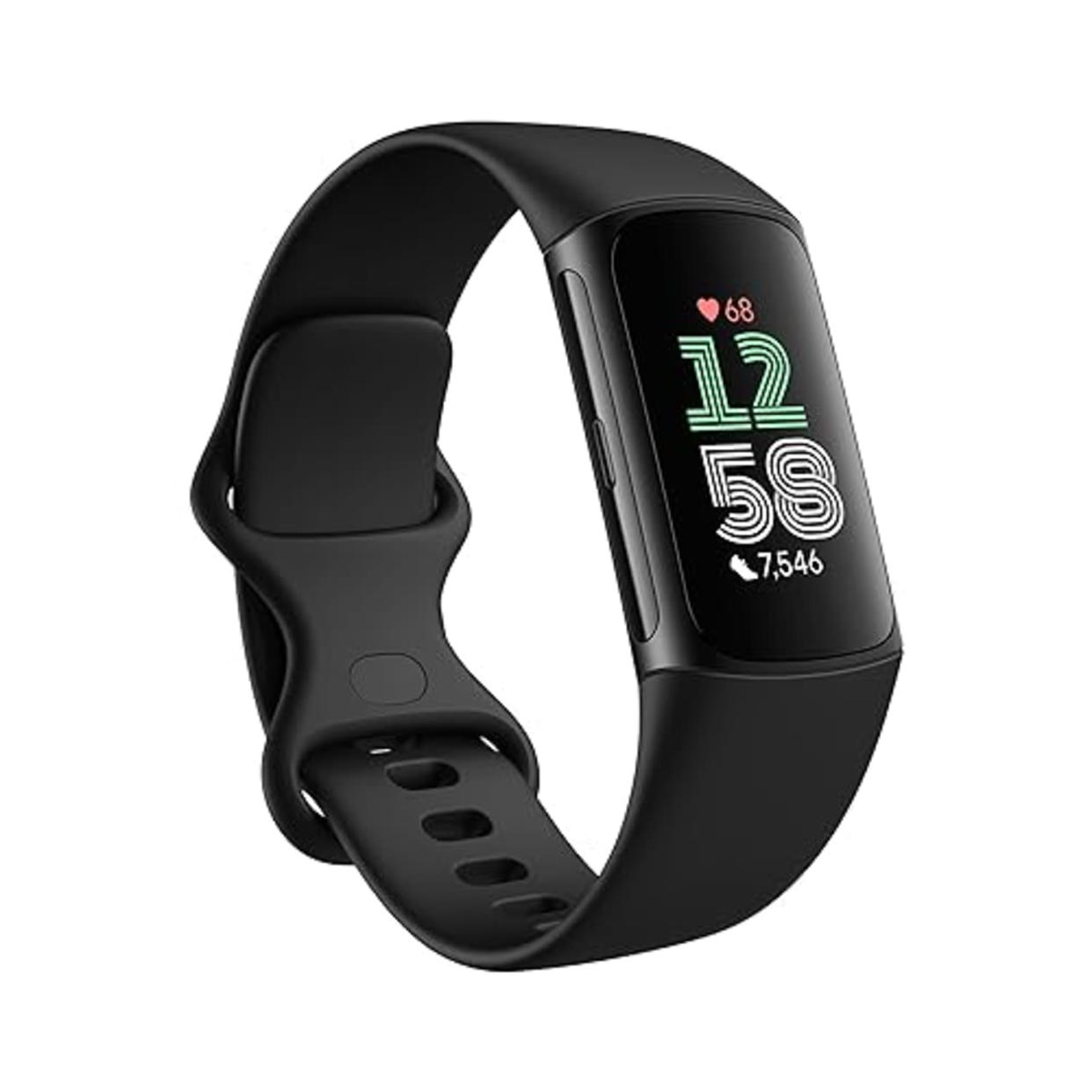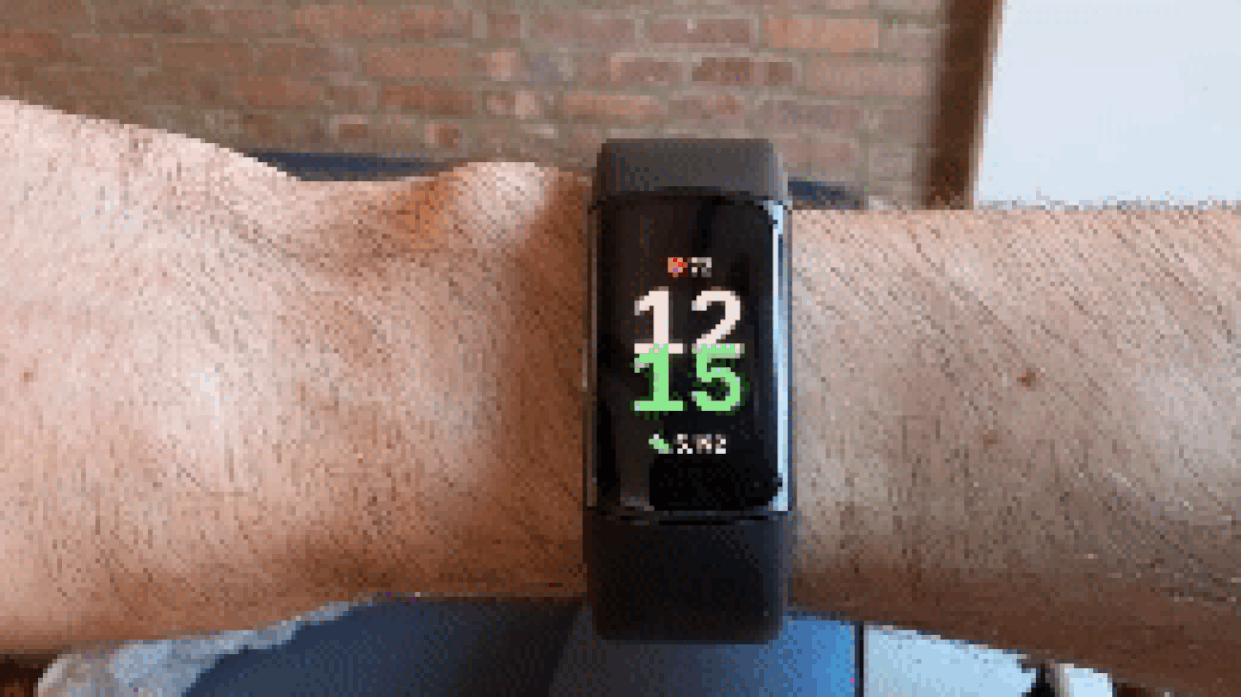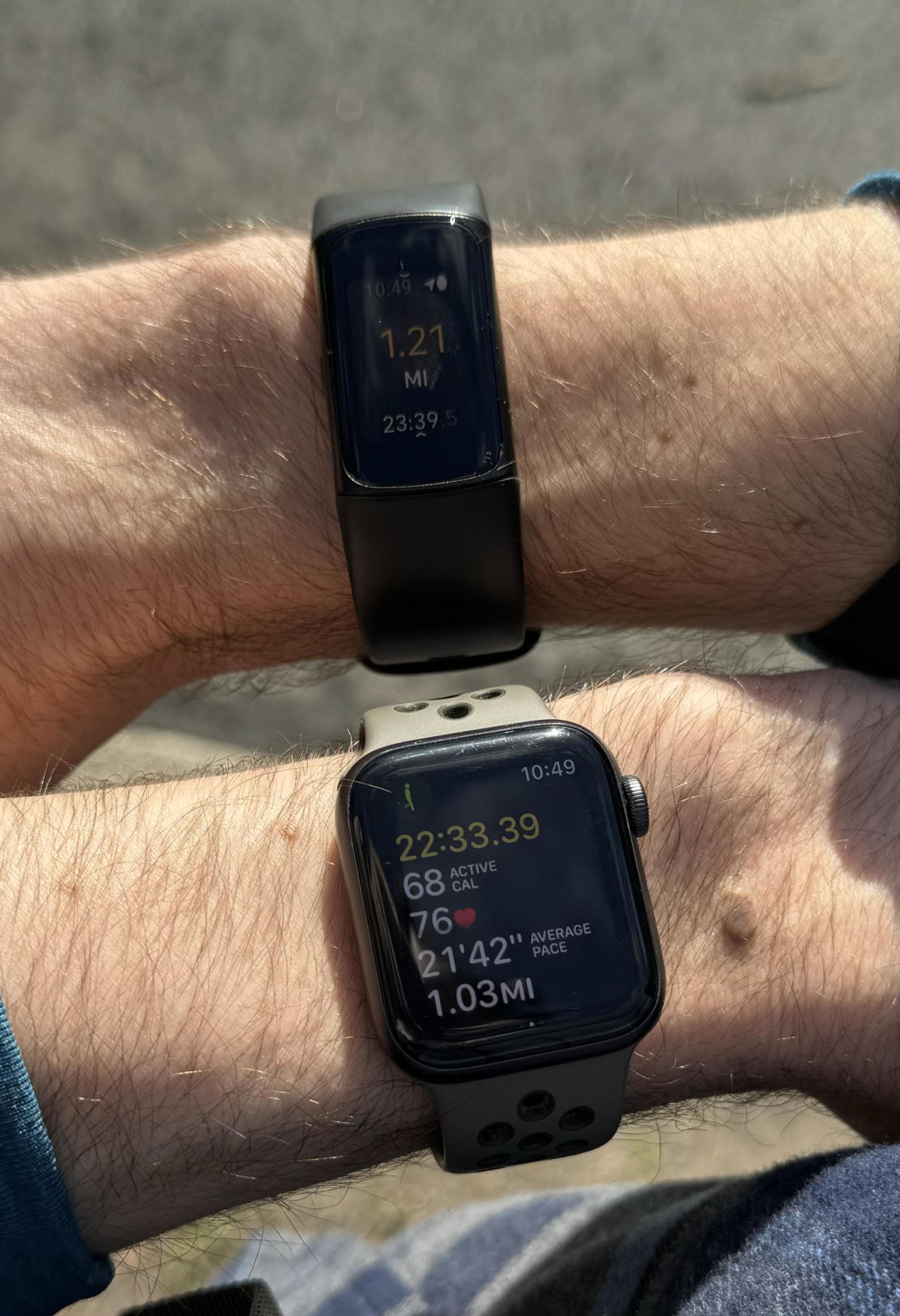I wore the Fitbit Charge 6 for weeks — here's what to know
Select independently determines what we cover and recommend. When you buy through our links, we may earn a commission. Learn more.
Buying a fitness tracker is more complicated than ever. With tons of models on the market from popular, trusted brands, it can be difficult to wade through the pack to find the right one. I review tech and smartwatches for NBC Select, and even I have a hard time knowing which one to recommend to friends and family. Ask me for a suggestion and I’ll pepper you with a list of questions. “What phone do you have? Do you think you’ll wear this thing everyday? Even to sleep? Do you want to send texts from it? Do you run outdoors a lot?”
Thankfully, for anyone who has never owned a smartwatch before, or for folks who think less is more, I can wholeheartedly, easily recommend the Fitbit Charge 6. It’s a small, easy-to-use watch that costs less than most of the competition, without skimping on essential features.
SKIP AHEAD How I tried the Fitbit Charge 6 | Our experience with the Fitbit Charge 6 | Who is the Fitbit Charge 6 best for? | Why trust NBC Select?
The Fitbit Charge 6
Fitbit Charge 6
Fitbit Charge 6

The Fitbit Charge 6 ($159.95) is a small fitness watch that can track your heart rate, daily steps, distance traveled, fitness activities, calories burned, nightly sleep, menstrual health and other wellness metrics. It also shows notifications for texts, calls and emails when paired with a smartphone. It is smaller than most fitness trackers on the market, with a vertical touchscreen and has a swappable wristband.
The Charge 6 is an upgrade of 2021’s Fitbit Charge 5. On the outside, the two products are nearly identical. The Charge 6, which was released in 2023, has a new side button on the left — pressing it returns you to the home screen or, if you are working out, gives you options to complete your workout. It also has a more accurate heart rate sensor compared to the Charge 5, according to the brand.
Other changes are internal. You can choose from 41 different exercise modes (up from 20), including new options like strength training and HIIT. Also new to the Charge 6 are controls for Google Wallet, Google Maps navigation and YouTube Music. The Charge 6 can also connect via Bluetooth to certain home gym equipment like the latest models from Peloton, Concept 2, Tonal, Nordictrack and more. When connected, the machine will display your heart rate on screen.
The Charge 6 requires a Google account to use. If you already have a Fitbit account, you can migrate that data into a Google account — the app will walk you through this process.
Display size: 26mm touchscreen | Weight: 15g (without band) | Battery life: Up to 7 days | Built-in GPS: Yes | Sleep tracking: Yes (not including naps) | Heart-rate monitor: Yes, with EKG | Water resistance: Yes, up to 50 meters | Works best with: Fitbit app (iPhone or Android)
How I tried the Fitbit Charge 6
I’ve been wearing the Fitbit Charge 6, which the brand sent me, for the past three weeks, as well as on and off since its release in 2023. For the three week test period, I only took it off to charge it, usually in the evening after a few days’ use. I wore it for indoor and outdoor exercise, primarily strength training and running. While running, I relied on the Charge 6 to show me my distance and pace. I also wore the Apple Watch SE on my other wrist to compare data and stats between the devices.
NBC Select updates editor Mili Godio also tried the Charge 6 (Fitbit also sent her a model to sample) for about three weeks, tracking her walks and gym workouts. Prior to trying the Charge 6, she wore an another Fitbit device, the Charge 5, on and off for the past two years.
Our experience with the Fitbit Charge 6
The Charge 6 is one of the best fitness trackers for beginners, anyone who wants to be more active and those who do not already own a smartwatch. It’s comfortable, subtle, easy to use and doesn’t overwhelm you with data.
What we like
Friendly design
The Charge 6 is far less obtrusive on my wrist than something like an Apple Watch SE ($249) or Garmin Forerunner 165 ($249). It never bothers me during sleep (other wearables do), and never gets caught on long sleeves.

The Charge 6 is one of the only wearables Godio wears often — most other options she’s tried are either too big or too dense with data for her taste. After three weeks of constant use, I cannot help but agree: the interface of the Charge 6 is simple and less overwhelming than other data-heavy trackers. It never shows too much text on screen at once — each app takes up the whole screen instead of trying to split itself into sections and show you as much text as possible. This is a smart choice, considering the small 26 millimeters screen (compared to most smartwatch’s 40 to 46 millimeters).

Easy to use app
The friendly design extends to the Fitbit app too.
The Fitbit app is organized more like a health app than an exercise one, in my experience. The home screen shows your steps, active zone minutes, mileage, calories burned and sleep score — other apps, like Garmin Connect and Apple Fitness, put more emphasis on individual workout data, which can be overwhelming for beginners like Godio, who find graphs with metrics — like average power, cadence and vertical oscillation — unhelpful.
Battery life
The Charge 6 has great battery life. I averaged five days of use before needing to charge it — that’s far longer than entry-level smartwatches like the Apple Watch SE ($249) and Google Pixel Watch 2 ($349).
Its battery life nosedives, however, in the always-on display mode. While the feature is convenient for frequently checking the time, it knocks battery life down to about a day, in my experience so I largely kept this setting turned off.
Potential drawbacks to keep in mind
You cannot turn it off
Unlike every other fitness tracker I’ve tried, you cannot turn the Charge 6 off, which can drain battery life. It does, however, enter “power-saver mode” after 10 minutes of inactivity.
The Charge 6 (despite its name) is not super convenient to charge, either. The included USB-A charging cable is on the shorter side at 20.5-inches long compared to other brands’ cords and has weaker magnets that often pop out of place compared to something like the Apple Watch SE’s charging puck, in my experience. It’s also proprietary meaning you cannot use it with a wireless charger.
Certain data requires a Fitbit subscription to view
Your daily readiness score, sleep profile, sleep details and stress management details are only available if you are a Fitbit Premium subscriber, which costs $10 a month. This stings a bit, but there are competitors out there including the Apple Watch SE ($249) and Garmin Forerunner 165 ($249) that offer many sleep and readiness details with no added fees. People I know keep their wearables for at least three years — $10 a month adds up fast.
You can see a longer list of tracking features that are only available to subscribers here.
Not the best for live workout data

The accessible design and small screen of the Charge 6 is not a great fit for people who want to view a lot of stats during their workout.
During a run, my Apple Watch SE can show me five customizable data fields at a glance. I’ve set mine to show me my workout duration, heart rate, rolling mile pace, average mile pace and mileage completed.
The Charge 6, on the other hand, only shows me the current time, my workout duration, and one key metric in the center. You can tap the screen to cycle through different metrics in the key center spot, but I do not want to tap my wrist incessantly while running — I prefer to know everything at a glance.
I don’t think Fitbit should change this — the screen is too small to show a ton of data at once. This is just another example of how the Charge 6 is better for beginners than data fiends like me.
Who is the Fitbit Charge 6 best for?
The accessible design and small screen of the Charge 6 makes it a great fit for people who want something slim and casual to wear. Its simple interface is an option for beginners, but anyone planning their next half-marathon might be better off with a larger smartwatch.
Why trust NBC Select?
Harry Rabinowitz is a reporter at NBC Select who covers technology and fitness including guides to fitness tracking devices, running shoes and workout earbuds.
Mili Godio is an updates editor at NBC Select who covers a wide range of topics across skin care, wellness and pet care, including guides to scar treatments, dog food brands, and sunscreen for sensitive skin.
Rabinowitz and Godio tried the Fitbit Charge 6 for three weeks after the brand sent them each a model to try out. Rabinowitz tracked his exercise, sleep and everyday metrics, and compared them to other wearables at a similar price point.
Catch up on Select’s in-depth coverage of personal finance, tech and tools, wellness and more, and follow us on Facebook, Instagram, Twitter and TikTok to stay up to date.
